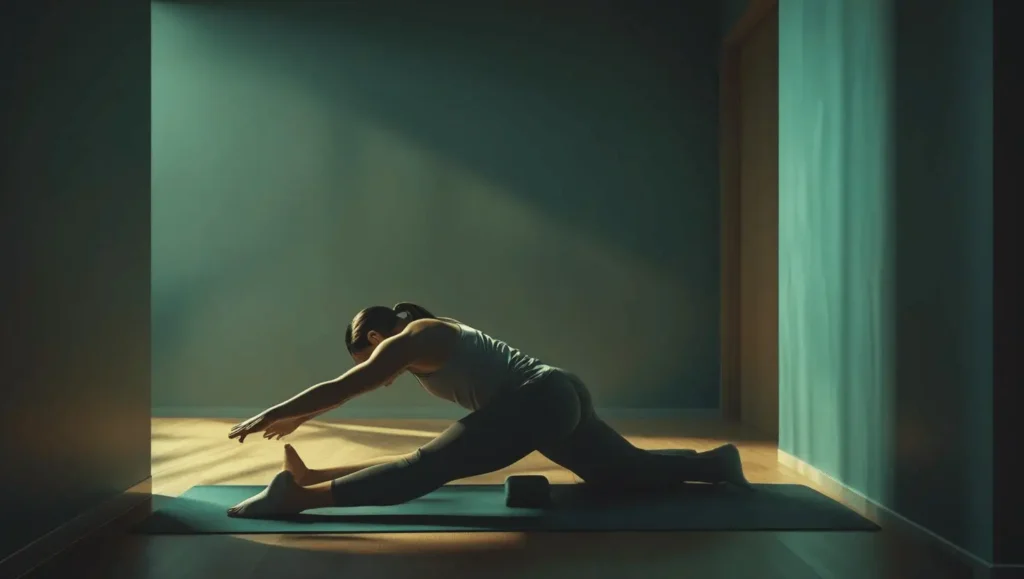How to Start Exercising at Home for Beginners
Starting your fitness journey can feel overwhelming, especially when you’re wondering how to start exercising at home for beginners. The good news is that you don’t need expensive gym memberships or fancy equipment to transform your health and build lasting fitness habits. With the right approach, your living room can become the perfect workout space to achieve your fitness goals.
Home workouts have revolutionized the fitness industry, offering unprecedented convenience and flexibility. Whether you’re a complete beginner or returning to exercise after a long break, this comprehensive guide will walk you through everything you need to know about how to start exercising at home for beginners successfully.
Table of Contents
Why Home Workouts Are Perfect for Beginners
Learning how to start exercising at home for beginners offers numerous advantages that make it the ideal choice for newcomers to fitness. Home workouts eliminate common barriers that prevent people from starting their fitness journey.
Privacy and Comfort: Working out at home removes the intimidation factor of exercising in front of others. You can focus on learning proper form without feeling self-conscious about your current fitness level.
Cost-Effective Solution: Home workouts require minimal investment compared to gym memberships, personal trainers, or fitness classes. You can start with bodyweight exercises that cost absolutely nothing.
Time Efficiency: Eliminate commute time to and from the gym. You can squeeze in a 20-minute workout during lunch breaks or before morning routines without disrupting your schedule.
Flexibility and Convenience: Exercise whenever it fits your schedule, whether that’s 5 AM or 10 PM. There’s no need to work around gym hours or class schedules.

Essential Equipment You Need to Get Started
When learning how to start exercising at home for beginners, you’ll be surprised how little equipment you actually need. Here’s a breakdown of essential items by budget level:
Zero Budget Equipment
- Your Body Weight: The most versatile piece of equipment you already own
- Stairs: Perfect for cardio and strength training
- Wall Space: For wall sits, push-ups, and stretching
- Floor Space: Enough room to lie down with arms extended
Minimal Budget Equipment ($20-50)
- Yoga Mat: Provides cushioning and grip for floor exercises
- Resistance Bands: Lightweight and versatile for strength training
- Water Bottles: Can double as light weights for beginners
Moderate Budget Equipment ($50-150)
- Adjustable Dumbbells: Versatile for progressive strength training
- Resistance Band Set: Multiple resistance levels for varied workouts
- Stability Ball: Excellent for core strengthening and balance
According to the American Council on Exercise, starting with minimal equipment allows beginners to focus on mastering fundamental movements before investing in more advanced tools.
Setting Up Your Home Workout Space
Creating an effective workout environment is crucial when learning how to start exercising at home for beginners. Your space doesn’t need to be large or elaborate—just functional and motivating.
Space Requirements
- Minimum 6×6 feet: Enough room to perform jumping jacks and lunges
- 8-foot ceiling height: Allows for overhead movements safely
- Hard, level flooring: Provides stability and safety during exercises
Environmental Considerations
- Proper ventilation: Keep air flowing to maintain comfort during workouts
- Adequate lighting: Ensure you can see clearly to maintain proper form
- Temperature control: Slightly cool environment prevents overheating
- Noise management: Consider downstairs neighbors and family members
Motivation Boosters
- Mirror placement: Helps monitor form and provides visual feedback
- Inspirational quotes: Post motivational messages where you’ll see them
- Equipment organization: Keep everything easily accessible and tidy
- Music system: Quality speakers or headphones enhance workout experience
10 Proven Steps to Start Your Home Exercise Journey
Understanding how to start exercising at home for beginners requires following a systematic approach. These ten steps will guide you from complete beginner to confident home workout enthusiast.
Step 1: Assess Your Current Fitness Level
Before beginning any exercise program, honestly evaluate your starting point. Consider factors like:
- How long since your last regular exercise routine
- Any existing health conditions or injuries
- Your daily activity level and energy patterns
- Physical limitations or mobility issues
Step 2: Set Realistic and Specific Goals
Define what you want to achieve through your home workouts:
- Short-term goals: Exercise 3 times per week for one month
- Medium-term goals: Complete 20 push-ups or run for 10 minutes straight
- Long-term goals: Lose 20 pounds or complete a 5K run
Step 3: Choose Your Workout Style
Different exercise styles appeal to different personalities:
- High-Intensity Interval Training (HIIT): Quick, intense bursts
- Strength Training: Building muscle and bone density
- Yoga/Pilates: Flexibility, balance, and mindfulness
- Dance Workouts: Fun, cardio-focused routines
- Mixed Approach: Combining multiple styles throughout the week
Step 4: Start with Bodyweight Exercises
Master fundamental movements before adding equipment:
- Push-ups (modified on knees if needed)
- Squats with proper form
- Lunges for lower body strength
- Planks for core stability
- Mountain climbers for cardio
Step 5: Follow the Progressive Overload Principle
Gradually increase workout intensity by:
- Adding more repetitions each week
- Increasing exercise duration
- Reducing rest time between sets
- Progressing to more challenging exercise variations
Step 6: Create a Consistent Schedule
Consistency beats intensity when learning how to start exercising at home for beginners. Start with:
- Week 1-2: 2 sessions per week, 15-20 minutes each
- Week 3-4: 3 sessions per week, 20-25 minutes each
- Week 5-8: 3-4 sessions per week, 25-30 minutes each
Step 7: Learn Proper Form and Technique
Quality trumps quantity in every exercise. Focus on:
- Slow, controlled movements: Avoid rushing through exercises
- Full range of motion: Complete each movement properly
- Breathing patterns: Coordinate breathing with movement
- Body alignment: Maintain proper posture throughout
Step 8: Incorporate Warm-Up and Cool-Down
Every workout should include:
- 5-minute warm-up: Light cardio and dynamic stretching
- Main workout: Your planned exercise routine
- 5-minute cool-down: Static stretching and relaxation
Step 9: Listen to Your Body
Pay attention to signals like:
- Good fatigue: Muscle tiredness after challenging workout
- Warning signs: Sharp pain, dizziness, or extreme breathlessness
- Recovery needs: Adequate rest between intense sessions
- Hydration status: Drink water before, during, and after exercise
Step 10: Track Progress and Celebrate Wins
Monitor your journey through:
- Workout logs: Record exercises, sets, and repetitions
- Progress photos: Visual documentation of physical changes
- Fitness measurements: Track improvements in strength and endurance
- Mood and energy levels: Note how exercise affects your daily life

Best Beginner-Friendly Exercises for Home {#beginner-exercises}
When learning how to start exercising at home for beginners, these fundamental exercises form the foundation of any successful routine:
Upper Body Exercises
Modified Push-Ups:
- Start on knees instead of toes
- Keep hands slightly wider than shoulder-width apart
- Lower chest toward floor, maintaining straight line from head to knees
- Push back up to starting position
- Aim for 8-12 repetitions
Wall Push-Ups:
- Stand arm’s length from wall
- Place palms flat against wall at shoulder height
- Lean forward and push back, keeping body straight
- Perfect for absolute beginners
- Work up to 15-20 repetitions
Lower Body Exercises
Bodyweight Squats:
- Stand with feet shoulder-width apart
- Lower body as if sitting back into chair
- Keep chest up and knees behind toes
- Return to standing position
- Start with 10-15 repetitions
Stationary Lunges:
- Step forward with right foot
- Lower body until both knees form 90-degree angles
- Push back to starting position
- Repeat with left leg
- Aim for 8-10 per leg
Core Strengthening
Plank Hold:
- Start in push-up position
- Hold body in straight line from head to heels
- Engage core muscles throughout
- Begin with 15-30 second holds
- Progress to 60 seconds or longer
Dead Bug:
- Lie on back with arms extended toward ceiling
- Lift knees to 90-degree angle
- Lower opposite arm and leg slowly
- Return to starting position
- Perform 8-10 per side
Cardio Exercises
Marching in Place:
- Lift knees toward chest alternately
- Pump arms as if walking
- Maintain upright posture
- Start with 30-60 seconds
- Excellent warm-up exercise
Step-Ups:
- Use stairs or sturdy platform
- Step up with right foot, bring left foot up
- Step down with right foot, then left
- Continue for 30-60 seconds
- Switch leading leg halfway through
The Mayo Clinic recommends starting with 2-3 of these exercises per session, focusing on proper form rather than speed or intensity.
Creating Your First Weekly Workout Schedule
Structuring your week properly is essential when learning how to start exercising at home for beginners. Here’s a progressive 4-week schedule:
Week 1: Foundation Building
Monday: Upper body focus (15 minutes)
- Wall push-ups: 2 sets of 8-12
- Arm circles: 2 sets of 10 each direction
- Plank hold: 2 sets of 15-20 seconds
Wednesday: Lower body focus (15 minutes)
- Bodyweight squats: 2 sets of 8-12
- Stationary lunges: 2 sets of 6-8 each leg
- Marching in place: 2 sets of 30 seconds
Friday: Full body light (20 minutes)
- Combine 3-4 exercises from previous days
- Focus on form and breathing
- Include 5-minute warm-up and cool-down
Week 2: Increase Duration
Monday: Upper body (20 minutes)
- Add modified push-ups if ready
- Increase plank hold to 25-30 seconds
- Include gentle stretching
Wednesday: Lower body (20 minutes)
- Add step-ups or stair climbing
- Increase squat repetitions
- Include calf raises
Friday: Cardio focus (20 minutes)
- Marching in place: 3 sets of 45 seconds
- Add gentle jumping jacks if comfortable
- Include more dynamic movements
Week 3: Add Frequency
Monday: Upper body strength Tuesday: Light cardio and stretching Thursday: Lower body strength Saturday: Full body combination
Week 4: Increase Intensity
- Add third set to most exercises
- Introduce new exercise variations
- Increase cardio duration
- Focus on smoother transitions between exercises
Common Mistakes to Avoid When Starting
Understanding how to start exercising at home for beginners includes recognizing potential pitfalls that can derail your progress:
Doing Too Much Too Soon
The Problem: Jumping into intense workouts immediately The Solution: Start with 15-20 minute sessions and gradually increase Why It Matters: Prevents injury and exercise burnout
Ignoring Proper Form
The Problem: Rushing through exercises with poor technique The Solution: Focus on quality over quantity Why It Matters: Maximizes results and prevents injury
Skipping Warm-Up and Cool-Down
The Problem: Jumping straight into intense exercise The Solution: Always include 5 minutes of preparation and recovery Why It Matters: Reduces injury risk and improves performance
Not Having a Plan
The Problem: Random, inconsistent workouts The Solution: Follow a structured program with progressive goals Why It Matters: Ensures steady progress and maintains motivation
Comparing Yourself to Others
The Problem: Feeling discouraged by others’ fitness levels The Solution: Focus on your personal progress and improvements Why It Matters: Maintains motivation and prevents discouragement
According to Harvard Health Publishing, the most successful beginners focus on consistency rather than intensity, making gradual lifestyle changes that become sustainable habits.
Tracking Your Progress and Staying Motivated
Monitoring your journey is crucial when learning how to start exercising at home for beginners. Here are effective tracking methods:
Physical Progress Tracking
Exercise Performance:
- Record repetitions, sets, and exercise duration
- Note improvements in strength and endurance
- Track new exercises you can perform
- Monitor recovery time between sessions
Body Measurements:
- Take photos from multiple angles monthly
- Record weight if desired (remember muscle weighs more than fat)
- Measure waist, hips, arms, and thighs
- Note improvements in flexibility and balance
Wellness Tracking
Energy Levels:
- Rate daily energy on 1-10 scale
- Note correlation between exercise and energy
- Track sleep quality improvements
- Monitor mood changes
Health Markers:
- Note any reduction in joint pain or stiffness
- Track improvements in breathing during daily activities
- Monitor stress levels and anxiety reduction
- Record any positive health changes
Motivation Strategies
Reward System:
- Set small, achievable milestones
- Create non-food rewards for reaching goals
- Celebrate consistency over perfection
- Share achievements with supportive friends or family
Accountability Methods:
- Find a workout buddy (even virtually)
- Join online fitness communities
- Use fitness apps or social media for motivation
- Schedule workouts like important appointments

Frequently Asked Questions
Q: How long should I exercise each day as a beginner? A: When learning how to start exercising at home for beginners, aim for 15-20 minutes initially. Gradually increase to 30-45 minutes as your fitness improves. Quality and consistency matter more than duration.
Q: Can I really get fit without any equipment? A: Absolutely! Bodyweight exercises are highly effective for building strength, endurance, and flexibility. Your body provides natural resistance, and countless exercises can be performed using just your body weight.
Q: How many days per week should I exercise? A: Start with 2-3 days per week, allowing rest days between sessions. As you build stamina and strength, you can increase to 4-5 days per week with varied intensity levels.
Q: What if I can’t complete the recommended repetitions? A: Start where you are and progress gradually. If 10 push-ups are too many, do 5 or even 3. The key is consistency and gradual improvement over time.
Q: How do I know if I’m doing exercises correctly? A: Focus on slow, controlled movements and pay attention to your body. Consider using mirrors, fitness apps with video demonstrations, or online tutorials to verify proper form.
Q: What should I eat before and after workouts? A: Eat a light snack 30-60 minutes before exercising if needed. After workouts, consume a combination of protein and carbohydrates within 30 minutes to support recovery.
Start Your Transformation Today
Learning how to start exercising at home for beginners is one of the most valuable investments you can make in your health and well-being. The journey begins with a single step, and every small action builds toward significant, lasting change.
Remember that fitness is not about perfection—it’s about progress. Your home workout routine should evolve with your fitness level, interests, and lifestyle changes. Stay patient with yourself, celebrate small victories, and trust the process.
The convenience, affordability, and privacy of home workouts make them an excellent choice for beginners. You have everything you need to start today: your body, some floor space, and the determination to improve your health.
Don’t wait for the “perfect” moment or until you have all the equipment. Start with what you have, where you are, and begin building the healthy habits that will transform your life. Your future self will thank you for taking action today.
Ready to Begin Your Journey?
Take the first step right now:
- Clear a small space in your home
- Choose 2-3 exercises from this guide
- Set aside 15 minutes today
- Put on comfortable clothes and start moving
Your fitness transformation begins with this single decision. Make it count, stay consistent, and watch as your strength, confidence, and health improve week by week.
For more fitness tips and workout routines, explore our complete library of home exercise guides and join our community of home fitness enthusiasts here.
Healthy Heart Remedy PRO: The Ultimate Natural Solution for Cardiovascular Wellness

Discover Healthy Heart Remedy PRO, a premium natural supplement designed to support cardiovascular health, regulate blood pressure, and enhance overall heart function. Formulated with clinically-backed ingredients like CoQ10, magnesium glycinate, and beetroot extract, this remedy offers a comprehensive approach to heart wellness.
Disclaimer: Always consult with a healthcare professional before beginning any new exercise program, especially if you have pre-existing health conditions or concerns.




